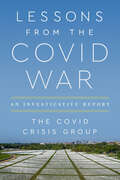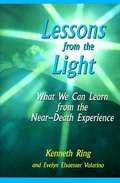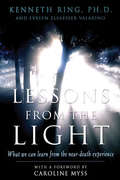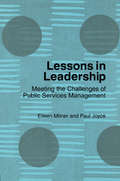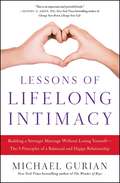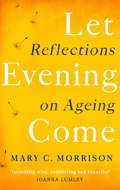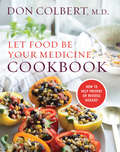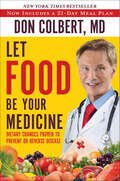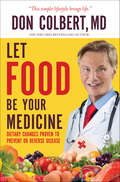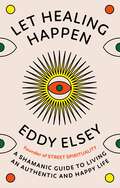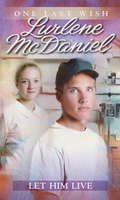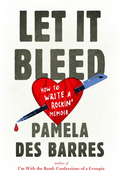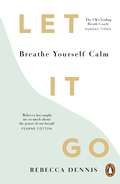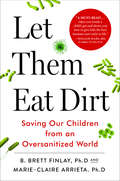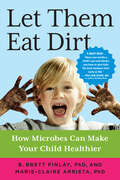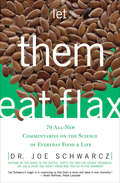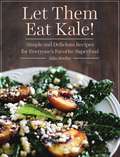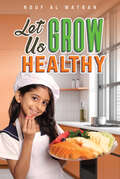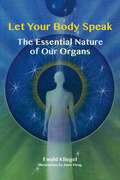- Table View
- List View
Lessons from the Covid War: An Investigative Report
by Covid Crisis GroupThis powerful report on what went wrong—and right—with America&’s Covid response, from a team of 34 experts, shows how Americans faced the worst peacetime catastrophe of modern times Our national leaders have drifted into treating the pandemic as though it were an unavoidable natural catastrophe, repeating a depressing cycle of panic followed by neglect. So a remarkable group of practitioners and scholars from many backgrounds came together determined to discover and learn lessons from this latest world war. Lessons from the Covid War is plain-spoken and clear sighted. It cuts through the enormous jumble of information to make some sense of it all and answer: What just happened to us, and why? And crucially, how, next time, could we do better? Because there will be a next time. The Covid war showed Americans that their wondrous scientific knowledge had run far ahead of their organized ability to apply it in practice. Improvising to fight this war, many Americans displayed ingenuity and dedication. But they struggled with systems that made success difficult and failure easy. This book shows how Americans can come together, learn hard truths, build on what worked, and prepare for global emergencies to come. A joint effort from: Danielle Allen • John M. Barry • John Bridgeland • Michael Callahan • Nicholas A. Christakis • Doug Criscitello • Charity Dean • Victor Dzau • Gary Edson • Ezekiel Emanuel • Ruth Faden • Baruch Fischhoff • Margaret &“Peggy&” Hamburg • Melissa Harvey • Richard Hatchett • David Heymann • Kendall Hoyt • Andrew Kilianski • James Lawler • Alexander J. Lazar • James Le Duc • Marc Lipsitch • Anup Malani • Monique K. Mansoura • Mark McClellan • Carter Mecher • Michael Osterholm • David A. Relman • Robert Rodriguez • Carl Schramm • Emily Silverman • Kristin Urquiza • Rajeev Venkayya • Philip Zelikow
Lessons from the Light
by Kenneth Ring Evelyn Elsaesser ValarinoWhile providing many accounts of near-death experiences (NDEs) from men, women, and children of all ages and backgrounds, Lessons from the Light is much more than just an inspiring collection of NDEs. In Lessons near-death expert Kenneth Ring extracts the pure gold of the NDE and with a beautiful balance of sound research and human insight reveals the practical wisdom held within these experiences. This material includes reports of out-of-body experiences, children's NDEs, blind people gaining sight during NDE episodes.
Lessons from the Light: What We Can Learn from the Near-Death Experience (Esp And The Paranormal Ser.)
by Kenneth Ring Evelyn Elsaesser ValarinoWhile providing many accounts of near-death experiences (NDEs) from men, women, and children of all ages and backgrounds, Lessons from the Light is much more than just an inspiring collection of NDEs. In Lessons near-death expert Kenneth Ring extracts the pure gold of the NDE and with a beautiful balance of sound research and human insight reveals the practical wisdom held within these experiences. <P><P>As Stanley Krippner states, "In this remarkable book, Ring presents evidence that merely learning about the near-death experience has similar positive effects to those reported by people who actually have had near-death experiences. Kenneth Ring is one of the few authors whose gifts include the capacity to transform their readers' lives."
Lessons in Leadership: Meeting the Challenges of Public Service Management
by Paul Joyce Eileen MilnerUsing international case study material, this book examines how ideas of visionary leadership have been developed and discusses their applicability to the public sector. The book covers: the tensions that can arise between administrative/bureaucratic traditions and the leadership styles required today the relationship between political leadership and organizational leadership different approaches that have been adopted by public service leaders in organizations around the globe and their level of success the extent to which existing theories of leadership are appropriate for a new management context. A welcome addition to the current literature, this book will be invaluable reading for students of public administration as well as practitioners and policy makers in the public services.
Lessons of Lifelong Intimacy: Building a Stronger Marriage Without Losing Yourself—The 9 Principles of a Balanced and Happy Relationship
by Michael GurianFrom New York Times bestselling author Michael Gurian comes a groundbreaking plan for happiness in love and marriage that shows you how to build healthy boundaries, work through past hurts, and create greater intimacy by maintaining emotional separateness. <P><P>Become separate from your partner yet also become closer—sounds counterintuitive, doesn’t it? With twenty-five years of family and marital counseling practice, Michael Gurian shows that “intimate separateness” is the key to creating a healthy partnership in life. <P><P>Recent university studies show that the most frequent reason relationships dissolve is not abuse, alcoholism, money, or even infidelity, but rather a lack of emotional fulfillment. Most books on love and marriage focus on teaching communication and conflict skills, but neglect to help couples with the “other half” of intimacy—separateness. In this practical yet personal guide to love, Gurian details the benefits of creating a lifelong balance of closeness and separateness. He outlines a twelve-stage model created for his own private practice, which provides long-term goals and focal points for dialogue that can help couples work through arguments. Gurian also delves into differences in white and gray matter between the male and female brain (which may explain the varying needs for intimacy and separateness), differences in verbal and emotive development, and the effects these all have on relationships. <P><P>Rich with examples and case studies, this book presents strategies for communication and conflict that build more emotional balance, while showing how intimate separateness can be the key to lifelong happiness.
Let Evening Come: Reflections on Ageing
by Mary C. Morrison'Incredibly wise, comforting and beautiful' - Joanna LumleyIt is never too soon to start thinking about old age. In Let Evening Come, Mary C. Morrison, herself eighty-seven at the time of first publication, considers the gains and losses of the ageing process in all their depth and richness. She writes about old age from her own personal experience, describing without sentimentality or despair how it actually feels to grow old, to be old, to look back over life, to look forward to death. In a series of meditative passages and journal entries she presents old age as a time that calls for gallantry and courage, but one that also offers unique opportunities for inner growth and wisdom.Let Evening Come is a remarkable book; simply but elegantly written, it is both moving and uplifting. It is not only for those standing on the edge of old age, it is for people of all ages, and once read will be recommended to others for the very special pleasures found within its pages.
Let Food Be Your Medicine Cookbook: How to Prevent or Reverse Disease!
by Don ColbertMost of us think God is not concerned with what we eat, but the Bible actually offers great insight and instruction about the effects of food on our bodies. Dr. Colbert introduces an antiinflammatory form of the modified Mediterranean diet that resolves a broad spectrum of diseases, including diabetes, heart disease, dementia, cancer, and osteoarthritis. Just imagine—understanding how food alone can produce mental clarity, balanced weight, and longevity.
Let Food Be Your Medicine: Dietary Changes Proven to Prevent and Reverse Disease
by Don ColbertMost of us think God is not concerned with what we eat, but the Bible actually offers great insight and instruction about the effects of food on our bodies. Dr. Colbert introduces a revolutionary sugar detox method, combined with an anti-inflammatory form of the modified Mediterranean diet that resolves a broad spectrum of diseases, including diabetes, heart disease, dementia, cancer, and osteoarthritis. Just imagine - understanding how food alone can produce mental clarity, balanced weight, and longevity. Includes meal plans.
Let Food Be Your Medicine: Dietary Changes Proven to Prevent and Reverse Disease
by Don ColbertMost of us think God is not concerned with what we eat, but the Bible actually offers great insight and instruction about the effects of food on our bodies. Dr. Colbert introduces a revolutionary sugar detox method, combined with an anti-inflammatory form of the modified Mediterranean diet that resolves a broad spectrum of diseases, including diabetes, heart disease, dementia, cancer, and osteoarthritis. Just imagine - understanding how food alone can produce mental clarity, balanced weight, and longevity. Includes meal plans.
Let Go: Release Yourself from Anxiety – Practical Tips and Techniques to Live a Happy, Stress-Free Life
by Elizabeth ArcherI breathe in peace, I breathe out tensionEmbrace the calm and happiness that comes once you’ve learned to let go.Don’t we all want to live a life full of positivity and joy, unshackled by anxiety? Well, the secret is in letting go of our fears, stress and worries, and this accessible and beautifully designed book will show you how – with practical techniques for dealing with anxiety, simple lifestyle changes and therapies you can try at home. Offering words of wisdom, positive affirmations and the low-down on the most effective treatments to explore, this is the book you need to take control of your life.
Let Go: Release Yourself from Anxiety – Practical Tips and Techniques to Live a Happy, Stress-Free Life
by Elizabeth ArcherI breathe in peace, I breathe out tensionEmbrace the calm and happiness that comes once you’ve learned to let go.Don’t we all want to live a life full of positivity and joy, unshackled by anxiety? Well, the secret is in letting go of our fears, stress and worries, and this accessible and beautifully designed book will show you how – with practical techniques for dealing with anxiety, simple lifestyle changes and therapies you can try at home. Offering words of wisdom, positive affirmations and the low-down on the most effective treatments to explore, this is the book you need to take control of your life.
Let Healing Happen: A Shamanic Guide to Living An Authentic and Happy Life
by Eddy Elsey‘A sober, sensible voice in an often insane out-of-balance New Age World. An engrossing and thoughtful read.’ - NICK BREEZE WOOD, Shamanologist and editor of Sacred Hoop Magazine-----------------------------------------------'Although our cultures wax and wane like the moon in the sky, the land beneath our feet still pulses with the same power that it always has. Shamanism is a gateway into the mysterious world of that power.’ - Eddy ElseyIn this book, shamanic practitioner and founder of online platform Street Spirituality, Eddy Elsey, shares his life-changing journey from living as a burned-out partygoer to becoming a practising shamanic healer and finally feeling like his authentic self. He reveals the rituals and tools that have helped him live a more spiritually grounded life so you can too.Let Healing Happen shows us that by connecting to our roots in the earth and drawing on ancient shamanic practices, it is possible to heal pain, find balance and embrace the role we play in this beautiful world.-------------------------------------------'Whatever your beliefs, this call to understanding ourselves as a part of the natural world has much to teach about living well.' - Claudia Canavan, health editor, Women's Health'An essential read for anyone on their spiritual journey’ – Fleur Britten, journalist, The Times, Guardian and Vogue
Let Him Live (One Last Wish #6)
by Lurlene McdanielA candy striper helps a 17-year-old boy deal with his uncertain future as he awaits a liver transplant. Together, they use his "One Last Wish" money to build a center for terminally ill kids.
Let It Bleed: How to Write a Rockin' Memoir
by Pamela Des BarresAuthor of the international bestseller I'm with the Band: Confessions of a Groupie, Pamela Des Barres shares with women the art of memoir writing.For the last fourteen years, Pamela Des Barres has been teaching an eight-week women's "femoir" writing workshop. She found that the music-loving ladies who showed up at her door had pent-up stories to tell. Many of them had read her two memoirs, which were wildly personal and deeply confessional, and felt comfortable opening up and experiencing that same freedom of expression. In this book, Des Barres guides women through the process of writing their memoirs. She has developed exercises to help her "dolls" recall, remember, relive, and reveal their memories, transgressions, temptations, their sleepless nights and brilliant afternoons, loves and losses, fears and regrets, secrets, sins, and sorrows. The assignments in Femoir have proven incredibly cathartic for her students. Just as intimate as one of her in-person workshops, this book includes some of Des Barres's own stories, as well as those of the women she's taught. Every person has an incredible story to tell—they just need to figure out how to tell it. By understanding themselves better through these writing exercises, women learn to be more fearless, free-spirited, and willing to try something new.
Let It Burn: Illuminate Your Life with Candles and Fragrance
by Sir Candle ManA guide to loving candles, living with candles, and using the magic of fragrance to help create beautiful spaces in your life.Discover the world of candles with Sir Candle Man, the preeminent candle-care expert who knows all the right ways to set a mood through the exquisite combination of wax and fragrance. Bougie means "candle" in French, which is quite fitting: Lighting a candle is like a ritual, a moment to treat yourself.Scent is powerful: for memory, for comfort, and for making your space your own. Whether you want to relax, have fun with friends at a dinner party, or use the right fragrance to focus and get some work done, scented candles are the easiest way to change a vibe instantly.With informative and inspiring guidance on buying and gifting candles, building your collection, decorating with candles, and adding them to your wellness rituals, Let It Burn will teach you how to light up your life with the magic of fragrance and flame.Get lit. Stay lit. You deserve it.EVERYONE LOVES CANDLES: Candles, especially high-end, beautifully designed candles (and their corresponding accessories), are not just for decor; they're a whole vibe. There's no better or more affordable way to change up the mood of your space, and this book shows you how. THE PERFECT LIT GIFT: Pair this book with a single candle, candle set, candle holder, wick trimmer, snuffer, a beautiful box of matches, or a lighter to create an irresistible gift set.THE FIRST CANDLE BOOK OF ITS KIND: While there are books about candle making, this is the first to explore the powerful connection between candles and self-care.Perfect for:Entertaining enthusiastsDIY decorators and anyone interested in scent or experiential decorSelf-purchase or gift for anyone seeking to explore self-care rituals and personal wellnessAnyone starting out in a new home or apartmentA great gift for grads, newlyweds, and hosts or hostessesBirthday, Valentine's Day, anniversary, or get-well gift for women or men
Let It Go: Breathe Yourself Calm
by Rebecca DennisBreathe out your worries and breathe in calm.This friendly support is an essential handbook to help tackle stress, anxiety, and to make everyday living easier for everyone.Breathwork is an ancient practice backed up by modern science. It is not just for the spiritually enlightened! It is a simple but powerful way for everyone to boost their health and happiness.Rebecca Dennis is the UK's leading breath coach, who has helped hundreds of people for over a decade to overcome all kinds of common issues simply using breathing exercises.Dive into bite-size sections with easy, immediately impactful methods to help you with: anxiety and stress, grief, to find happiness and positivity, confidence, focus at work, energy, deeper sleep, stronger immunity and to slow ageing, find resilience and recovering (from illness), as well as family-friendly exercises to help both children and parents.
Let That Sh*t Go: Find Peace of Mind and Happiness in Your Everyday
by Nina Purewal Kate Petriw"Stomach stress gurgles are no match for this spinning rolodex of chill pills." Neil Pasricha, #1 bestselling author of The Book of Awesome and The Happiness EquationLife is stressful as f*ck. But it doesn’t have to be.It’s no wonder you can’t calm down: your to-do list is as long as your arm, your bank balance keeps dropping, you feel guilty for not calling your parents more often and there always seems to be a big deadline to meet at work. You need a serious breather—but you can barely find time to shower, let alone to exercise or meditate. In Let That Sh*t Go, Kate Petriw and Nina Purewal share the wisdom they’ve gained though decades of practising and teaching others to find peace of mind no matter how busy they are. Learn to put your life in perspective, take each day one step at a time and steal moments of calm amid the chaos. And remember: it’s not worth holding onto that sh*t.
Let Them Eat Dirt
by B. Brett Finlay Marie-Claire ArriettaOur over-sanitized world threatens children's health, but parents can change their environment into one where they'll thrive.Babies and young kids are being raised in surroundings that are increasingly cleaner, more hyper hygienic, and more disinfected than ever before. As a result, the beneficial bacteria in their bodies is being altered, promoting conditions and diseases such as obesity, diabetes, asthma, allergies, and autism. As Let Them Eat Dirt shows, there is much that parents can do about this, including breastfeeding if possible, getting a dog, and avoiding antibiotics unless necessary-and yes, it is OK to let kids get a bit dirty.
Let Them Eat Dirt: How Microbes Can Make Your Child Healthier
by Dr B. Brett Finlay Dr Marie-Claire Arrieta“A must-read . . . Takes you inside a child’s gut and shows you how to give kids the best immune start early in life.” —William Sears, MD, coauthor of The Baby BookLike the culture-changing Last Child in the Woods, here is the first parenting book to apply the latest cutting-edge scientific research about the human microbiome to the way we raise our children. In the two hundred years since we discovered that microbes cause infectious diseases, we’ve battled to keep them at bay. But a recent explosion of scientific knowledge has led to undeniable evidence that early exposure to these organisms is beneficial to a child’s well-being. Our modern lifestyle, with its emphasis on hyper-cleanliness, is taking a toll on children’s lifelong health. In this engaging and important book, microbiologists Brett Finlay and Marie-Claire Arrieta explain how the trillions of microbes that live in and on our bodies influence childhood development; why an imbalance of those microbes can lead to obesity, diabetes, and asthma, among other chronic conditions; and what parents can do--from conception on--to positively affect their own behaviors and those of their children. They describe how natural childbirth, breastfeeding, and solid foods influence children’s microbiota. They also offer practical advice on matters such as whether to sterilize food implements for babies, the use of antibiotics, the safety of vaccines, and why having pets is a good idea. Forward-thinking and revelatory, Let Them Eat Dirt is an essential book in helping us to nurture stronger, more resilient, happy, and healthy kids.
Let Them Eat Flax!: 70 All-New Commentaries on the Science of Everyday Food & Life
by Joe SchwarczThe bestselling popular science author of A Grain of Salt serves up “interesting factoids about the way that science has helped shape our everyday lives” (Joe Culotti, PhD, professor of molecular and medical genetics, University of Toronto). In Let Them Eat Flax, award-winning author Dr. Joe Schwarcz continues his crusade against purveyors of poppycock as he investigates the surprising and sometimes sinister science of everyday food and life. What difference does an atom make? It could mean life or death! Get the lowdown on oxygenated water, the healing powers of prayer, and the health benefits of chocolate. Could there be a link between McGill University and Jack the Ripper? Find out how cinnamon helps to counter high cholesterol, and learn just how sweet sugar alternatives can be. In the tradition of Schwarcz’s five previous bestsellers, Let Them Eat Flax fries scientific baloney with humor, wit, and information. From food poisoning to the secret of the Stradivarius violin, fertilizers to spontaneous human combustion, Schwarcz investigates explosive subjects and delivers the unbiased, scientific facts readers need to make informed decisions in their everyday lives. “Dr. Schwarcz . . . has a knack for translating science into a language that anyone can understand and actually enjoy.” —Toronto Sun “Joe Schwarcz’s magic is in convincing us that there is verve and value in real chemistry.” —Roald Hoffman, Nobel Laureate “Dr. Joe blends intelligence, scientific expertise, critical thinking, humor, and a healthy dose of skepticism in a prescription for good reading.” —Leon Jaroff, former senior editor, Time magazine, and founder of Discover magazine
Let Them Eat Kale!: Simple and Delicious Recipes for Everyone's Favorite Superfood
by Julia MuellerKale is considered one of the world's most powerful superfoods for very good reasons. It's packed with antioxidants, which help neutralize free radicals in the body, which, in turn, helps to prevent many kinds of cancer. Just one cup provides more than 100 percent of the daily value of vitamins A, C, and K, and it's low calorie, high in fiber, and fat-free. Furthermore, kale is high in iron and has a good dose of omega-3 fatty acids, which work as an anti-inflammatory and help fight arthritis, asthma, and autoimmune disorders. And to top all that off, author Julia Mueller proves that it can be delicious.With seventy-five recipes for breakfast, lunch, dinner, snack time, and even dessert, your whole family will quickly fall in love with kale. Here's a sampling of the recipes included: Blackened salmon with garlicy Cajun kale Butternut squash and kale chili Cauliflower and kale yellow curry Grilled kale, peach, and corn salad with basil honey balsamic vinaigrette Indian chickpea stew with kale Roasted beet, walnut, and kale pesto Sausage, fennel, and kale soup Sautéed shrimp and kale tacos with pineapple, corn, and kale salsa Savory cheesy kale pancakes Shrimp, artichoke heart, sun-dried tomato pesto pizza Turkey sliders with caramelized onions, sautéed kale, and blue cheeseEach recipe is paired with a gorgeous full-color photo, making this not only a great cookbook, but a beautiful one as well. Whether you're an experienced chef, or just trying it out for the first time, Let Them Eat Kale! is an invaluable resource for a delicious, healthy kitchen.
Let Them Eat Promises: The Politics of Hunger in America
by Nick KotzGround-breaking history on the politics of hunger in the United States. Kolz asks who is hungry, why, and how can this be changed.
Let Us All Eat Cake
by Sarah Scheffel Catherine RuehleA delightful collection of gluten-free takes on your favorite cake recipes, from everyday coffee cakes, layered cakes, and cupcakes to show-stopping special occasion masterpieces.Celebrate your favorite holidays and special occasions from birthdays to bake sales, Halloween to Christmas--and even the everyday--with delectable gluten-free cakes. In this delightful collection, Catherine Ruehle, a pastry chef and cake artist turned wellness foods chef, shares sixty classic cake recipes that are every bit as indulgent as the gluten-heavy ones we adore, but gluten-free, all-natural, and with alternatives given for vegan, dairy-free, and nut-free renditions. A few of the luscious cakes that await: Pink Velvet Strawberry Cake made electrifyingly pink with strawberries instead of food dye, Peanut Butter and Jelly Cupcakes that children of all ages will be thrilled to find in their lunchboxes, and a dramatic White and Dark Chocolate Checkerboard Cake that's a cinch to prepare in advance. With positivity and careful guidance, Ruehle provides basic and advanced decorating, piping, and plating techniques that will take your cakes from pretty to breathtaking. So go ahead: lick the frosting off the beaters, cut yourself a nice big slice, and let us all eat cake!
Let Us Grow Healthy
by Nouf Al WatbanAre you expecting a baby or want your children to develop healthy eating habits but don’t know where to start? Let Us Grow Healthy is your guide to making better food choices for your family by focusing on wholesome, nutrient-dense foods while limiting unnecessary junk. This book will teach you: · The importance of proper nutrition during pregnancy. · What it means to choose fresh, whole, clean foods. · How to strengthen your child’s immune system through diet. · How to manage food allergies. · The meaning of GMOs and how to avoid them. · The essential vitamins and minerals kids need to thrive. · Why leafy greens and herbs/spices should be diet staples. · Tips for reducing salt and sugar intake. · Ways food can improve brain development and heart health. Let Us Grow Healthy aims to increase your nutrition knowledge with interesting tips and recommendations so you feel empowered to make the best dietary choices for your child’s optimal growth and long-term health. It’s never too early or too late to establish healthy eating habits!
Let Your Body Speak
by Ewald Kliegel Anne HengFeaturing stunning colour illustrations of the energy of human organs and other body parts, this book is perfect for anyone interested in learning about the self-healing properties of the body and the psychic, emotional, and physical elements central to existence. The book provides a deeper understanding of the wider psychological function of each organ, including eyes, hands, hips, knees, shoulders, spine, and teeth, and explains how they act in concert within the body. The illustrations further enhance how to receive the message of each organ on an intuitive level, and a chart of healing crystals corresponding with each organ brings further information on how to interact with the organs energetically.
